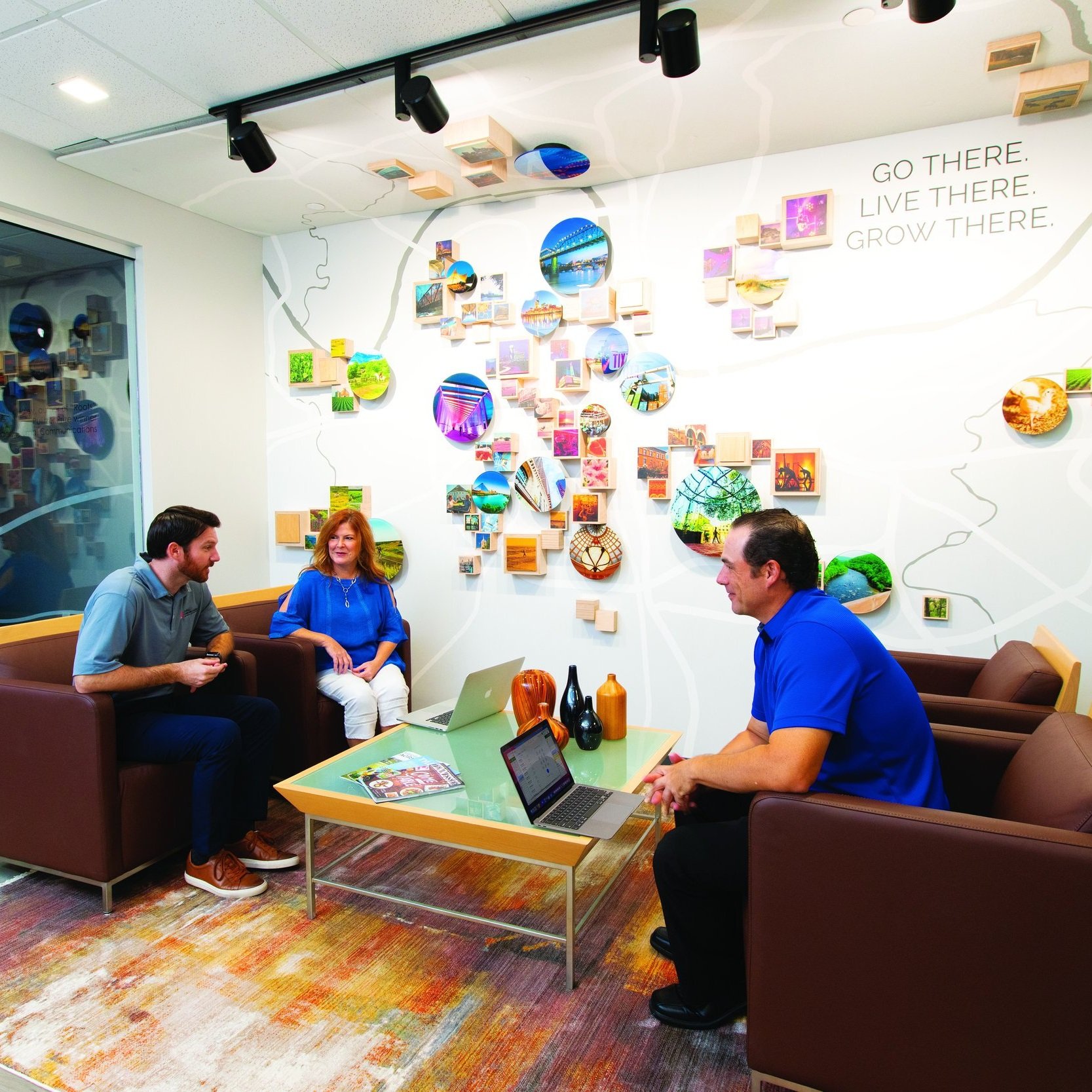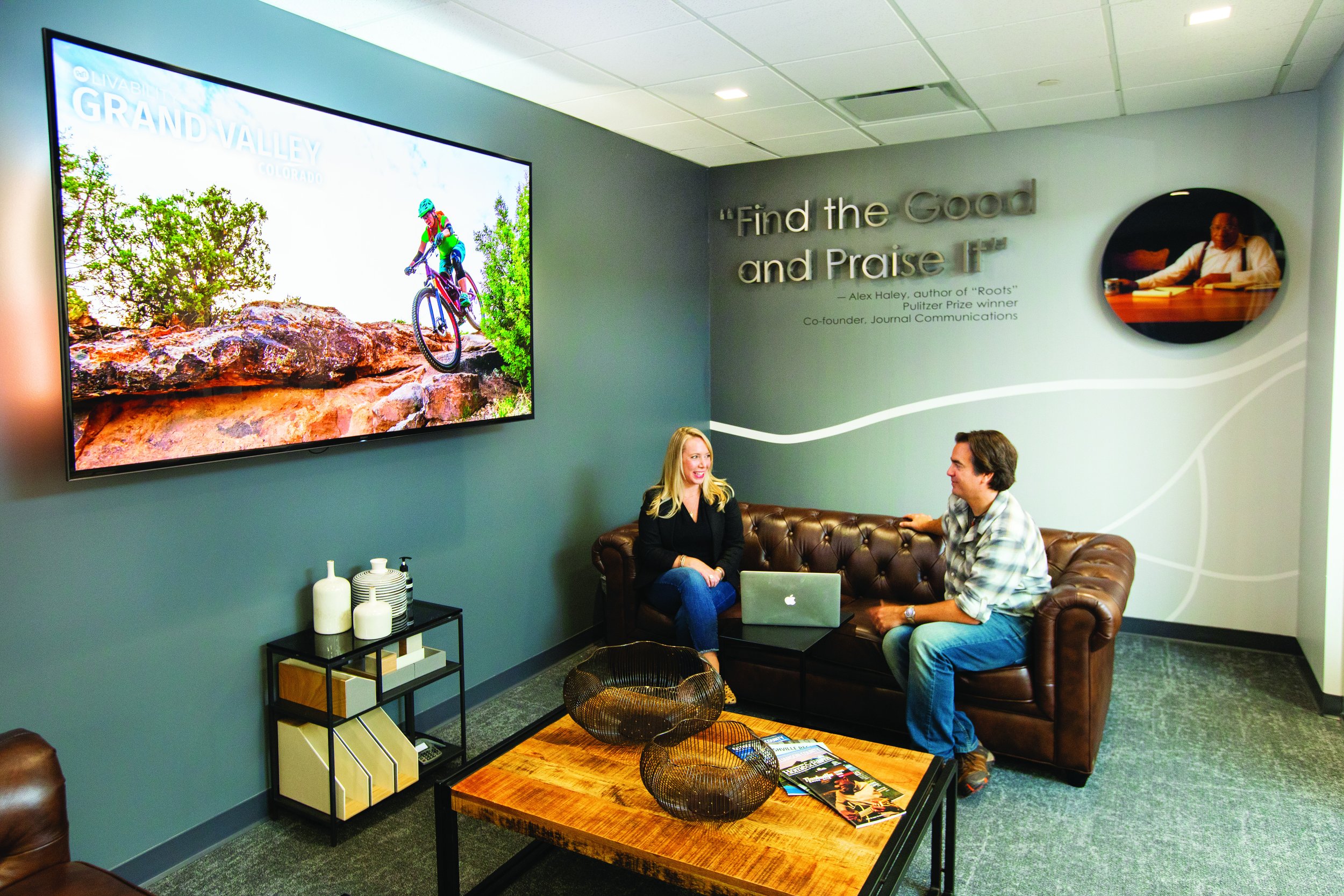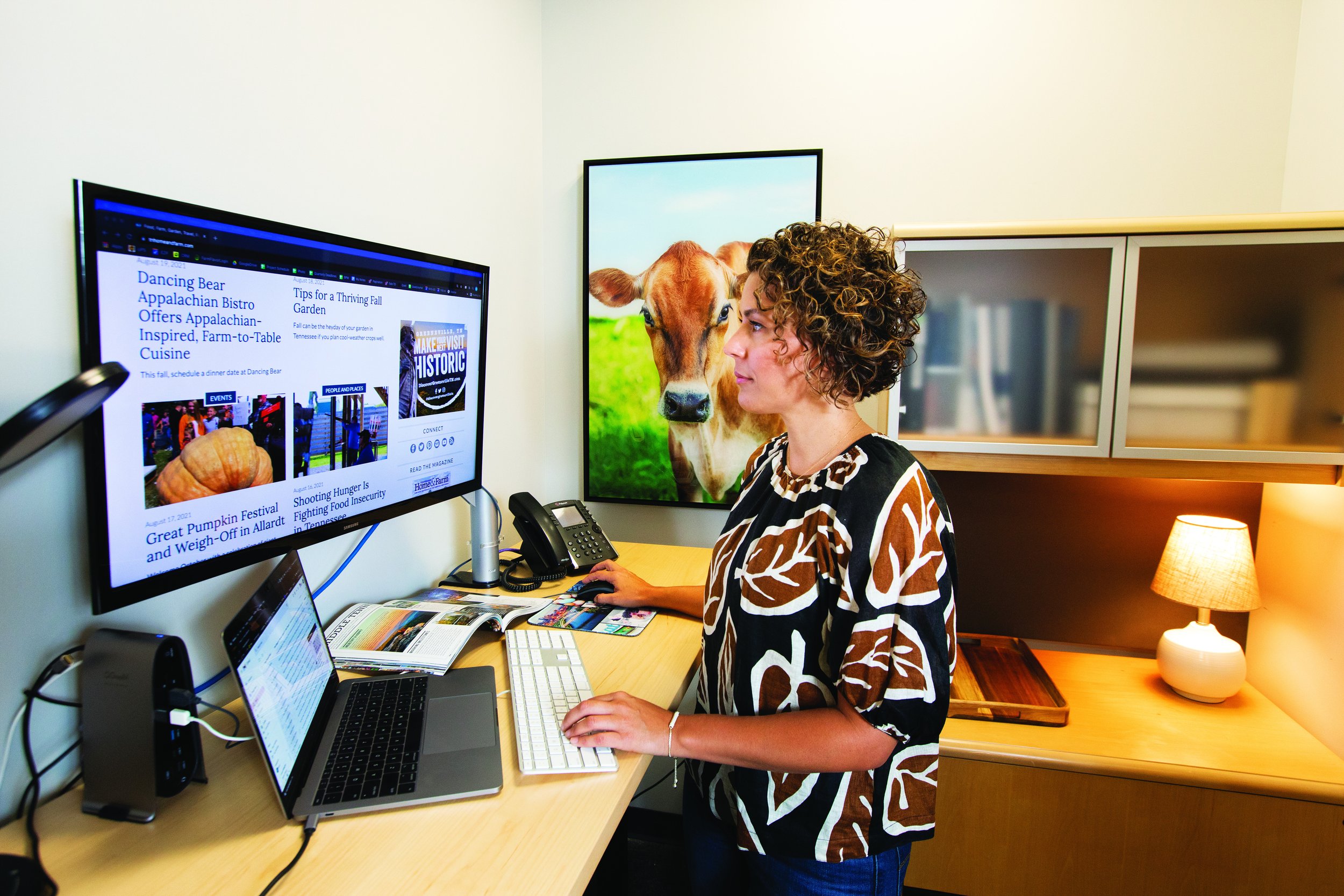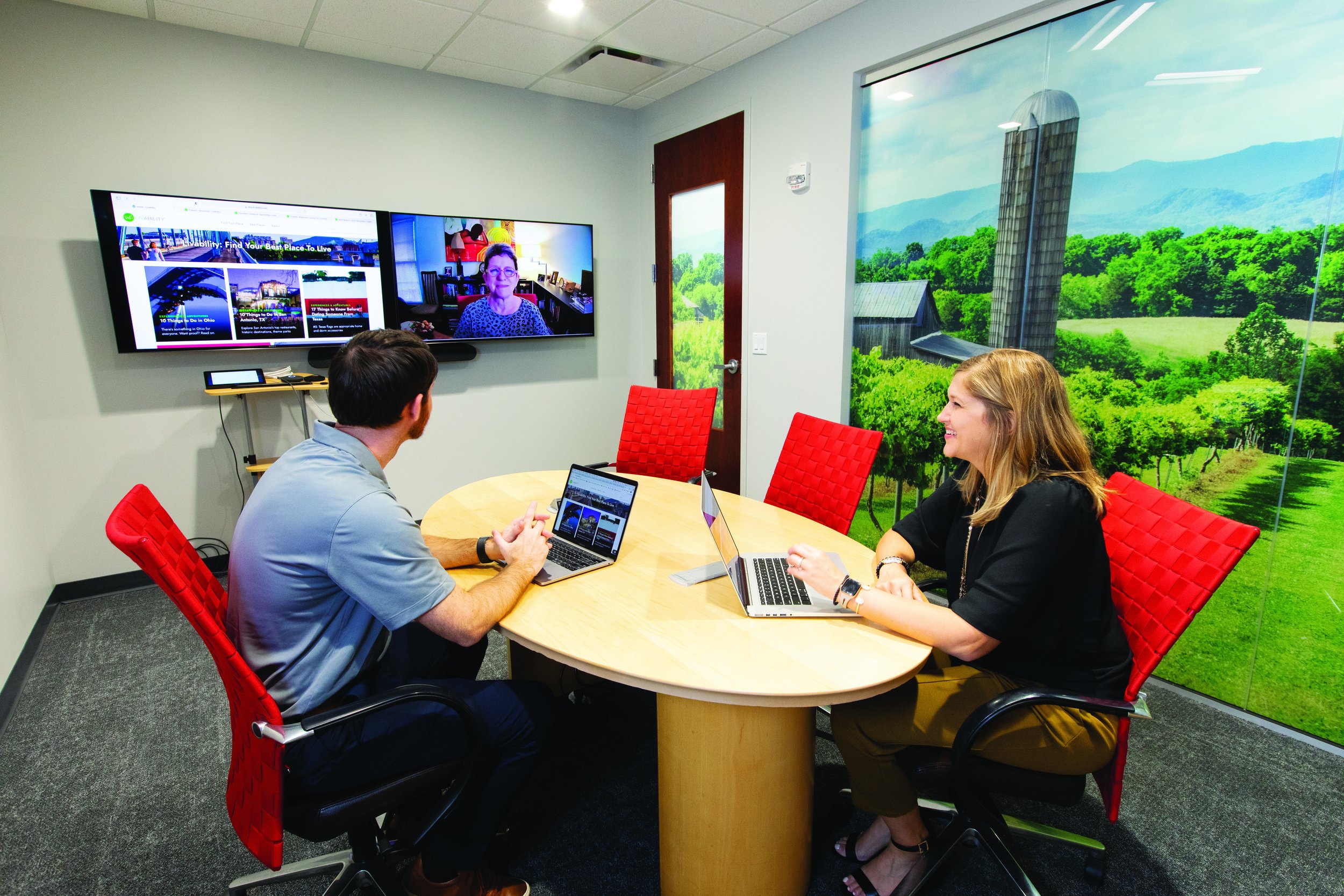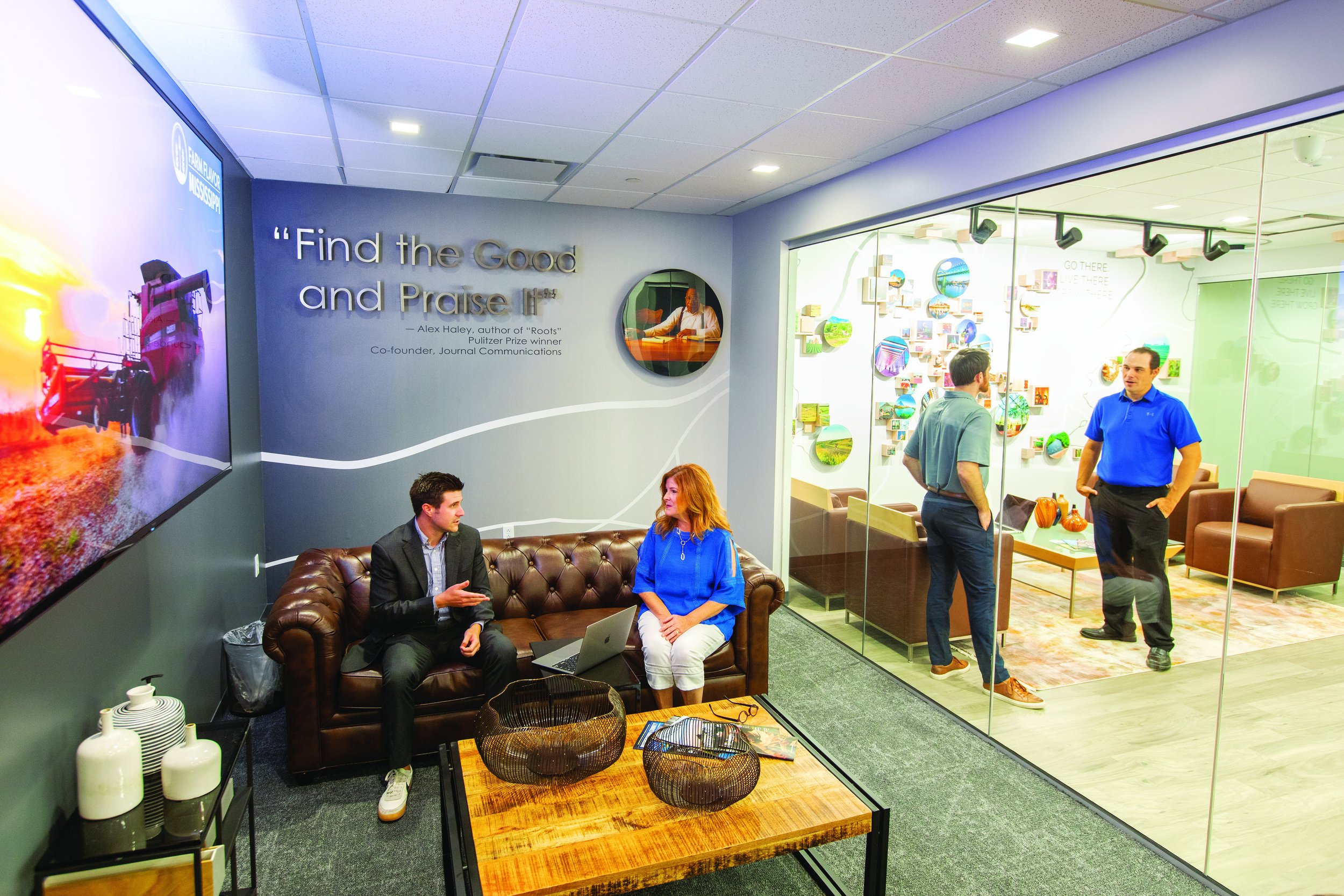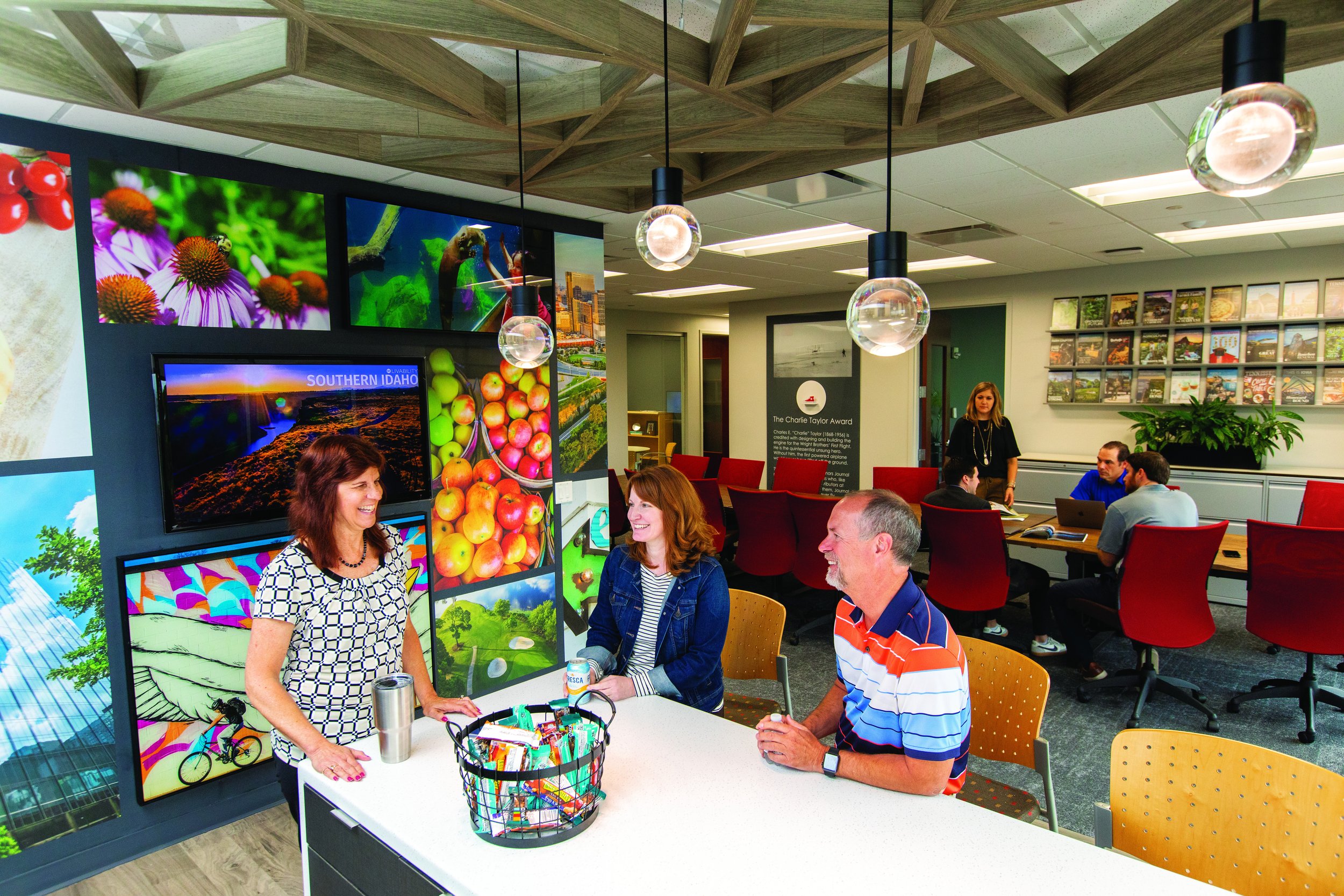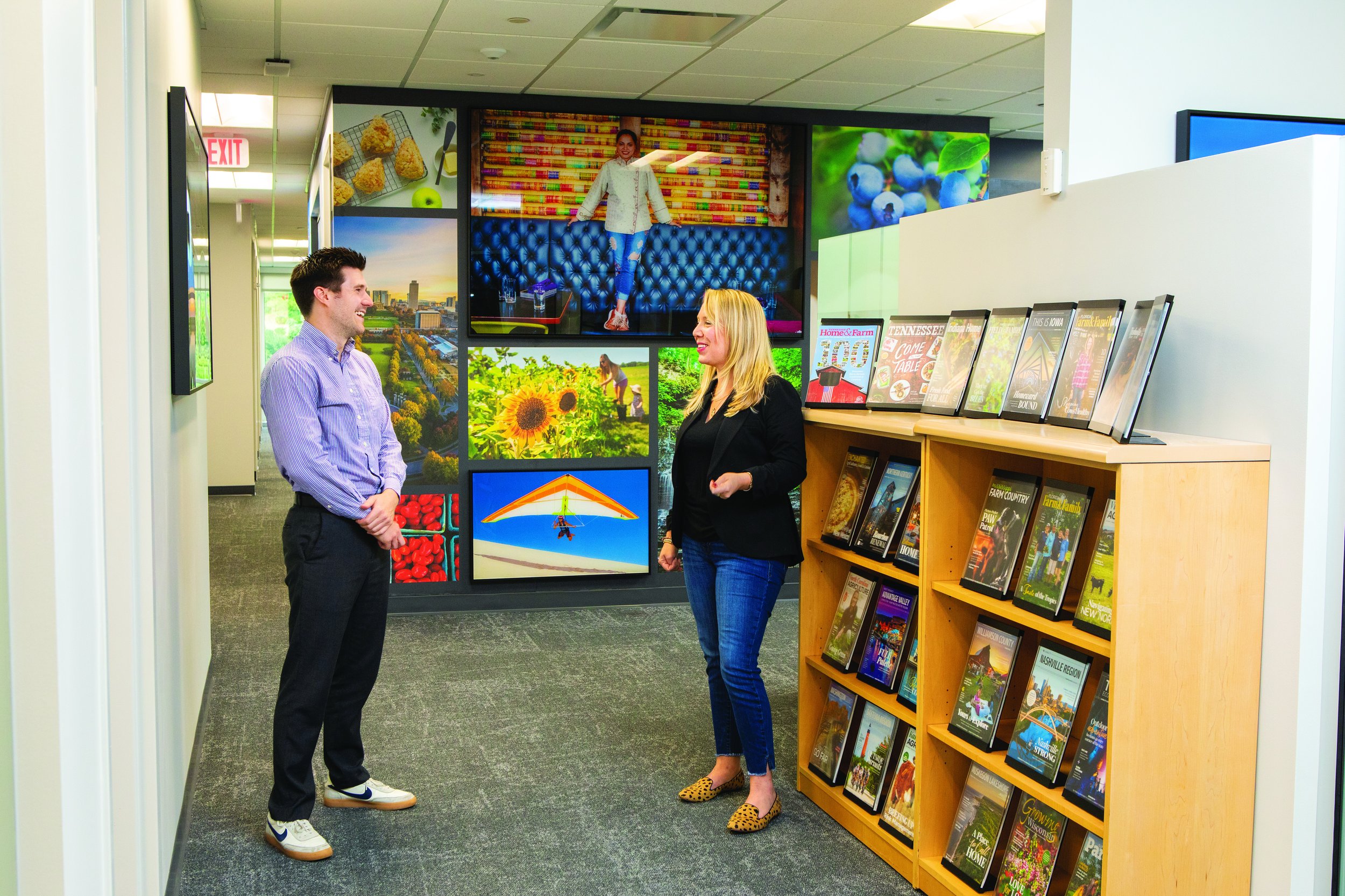For Journal Communications, Less (Space) Is More
Journal Communications kicked off 2021 by moving into a new office and into a new era for our staff and clients.
While we didn’t go far geographically – our new address is just down the road from our previous space in Franklin, Tenn. – we’ve advanced strategically in ways that benefit our employees, our clients, and the company as a whole. Our teams work within our divisions of Livability Media, Farm Flavor Media and Journal Travel – telling stories of places around the U.S., and encouraging our audiences to Go There. Live There. Grow There.
Like many offices across the globe, Journal transitioned to remote work in March 2020 as the COVID-19 pandemic escalated. Unlike many companies, though, we were already beginning to consider a new way of working. We had tiptoed into the hybrid work model in the past few years, with most staff working from home one or two days a week, primarily for focused work that didn’t require network access.
“In the past, spaces were designed by how many heads you are trying to fit in and how many workstations you need to fulfill that – what was left over is what you end up using for other purposes,” says COO Kim Holmberg. “We wanted to flip that completely on its head.”
Now fully embracing a hybrid work model, our innovative office focuses on flexibility and functionality for all who walk through its doors.
Do We Really Need Our Own Desks?
Throughout the spring and summer, we conducted rounds of employee surveys to get honest feedback from our staff of 60. One of the most important questions we asked: Do you really need your own desk? One of the most common replies we received: Not really.
“We weren’t really surprised by the answers,” Holmberg says. “The challenge then became, ‘How do we get them back in the office on occasion?’” The executive team concluded that the future office required more collaborative areas for teams, more private spaces equipped for Zoom calls – and a much smaller footprint.
So we said goodbye to a 25,000-square-foot property and hello to a 5,000-square-foot suite at the Bowers Park complex. Inside, we swapped out individual workstations for a blend of adjustable standing desks, reservable “quiet rooms,” and spacious coworking setups. Whether you’re coming in to get away from distractions at home or to meet with coworkers or clients, it’s a completely upgraded experience. Each quiet room, for example, has its own standing desk, large monitor and computer dock with accessories.
“We wanted everyone, particularly designers and editors who need a bigger screen, to be able to come into the office and plug right in, and not feel like they had to bring anything from home,” Holmberg explains.
Zoom Is a Verb
Embracing a more remote style of work means using various forms of technology to interact with our clients. The sales team, in particular, now works primarily via Zoom, as opposed to traveling four days a week. So we created a dedicated “Zoom Room” with next-level video-conferencing features: two front-facing flat-screen TVs (one to see the people you’re talking to, one to see yourself or a shared screen), a flat-screen TV on the opposite wall to display your digital background of choice, and even extra overhead lighting to make you look good on camera.
A Creative Look for a Creative Company
With the buildout and tech upgrades in full swing, we turned our focus to the design. We again tapped Jenny Campbell, principal at Nashville-based Collaborative Studio, to incorporate personal touches throughout our new space – starting from the moment you enter. In the lobby is a storytelling wall that overlays clusters of Journal photography on a map of the Nashville area. At first glance, it appears to be a stunning art installation that extends onto the ceiling. But take a closer look and you’ll see it also represents our breadth of diverse clients and communities, from entertainment to agriculture to travel and beyond.
Campbell, who has designed custom spaces for HCA Healthcare and Oz Nashville, says it’s important to consider how a physical space impacts people’s emotions and behaviors. With that in mind, the glass wall of the “Zoom Room” is covered with a large photo of scenic Arrington Vineyards that can only be viewed from the outside; from the inside, you can see through it out to the hallway, preventing potential feelings of being cramped.
Paying Tribute to Our Roots
And adjacent to the inviting, immersive lobby is an intimate meeting area in which Campbell re-created an inspiring element from our old space. “Find the good and praise it” was the mantra of another Journal cofounder (and fellow Pulitzer winner), author Alex Haley – and it’s now a backlit focal point on one side of this room. “We’re telling good stories about good places and good things,” Holmberg notes, “so we always want to continue the admiration of his legacy.”
More Journal photography is on display in the form of wall wraps and acrylic pieces that add depth and interest throughout the office. And en route to the kitchen, Journal cofounder Robin Hood’s Pulitzer-winning image of a Vietnam War veteran and his child watching the Chattanooga Armed Forces Day Parade is hung in recognition of the vital role photos play at our company.
Other elements from our previous space that have been repurposed (or reimagined) include many pieces of furniture, a large training room with tables that can be reconfigured, and a display dedicated to Journal’s Charlie Taylor awards, which celebrate our unsung hero employees.
Building an office for the future, Holmberg says, has been incredibly exciting.
“You really didn’t see a lot of companies downsizing to allow their employees to be able to go remote. It was a new thing for all of us. We started seeing more articles last fall about other companies doing similar things, but our plan was already in motion. It was extremely validating to see these huge brands doing essentially what we’re doing, too. It didn’t change anything for us – but it was like a pat on the back that we’re doing the right thing.”


